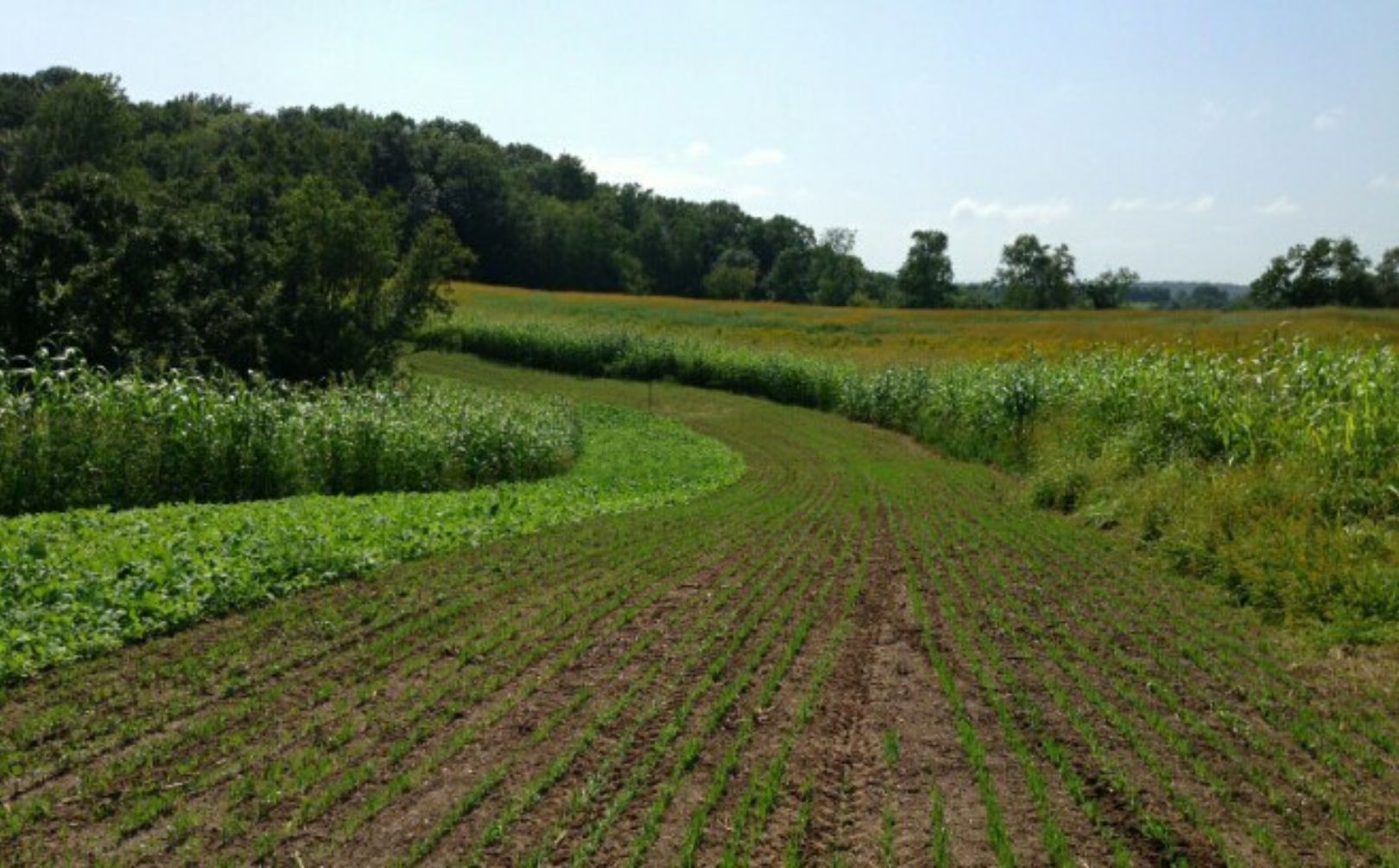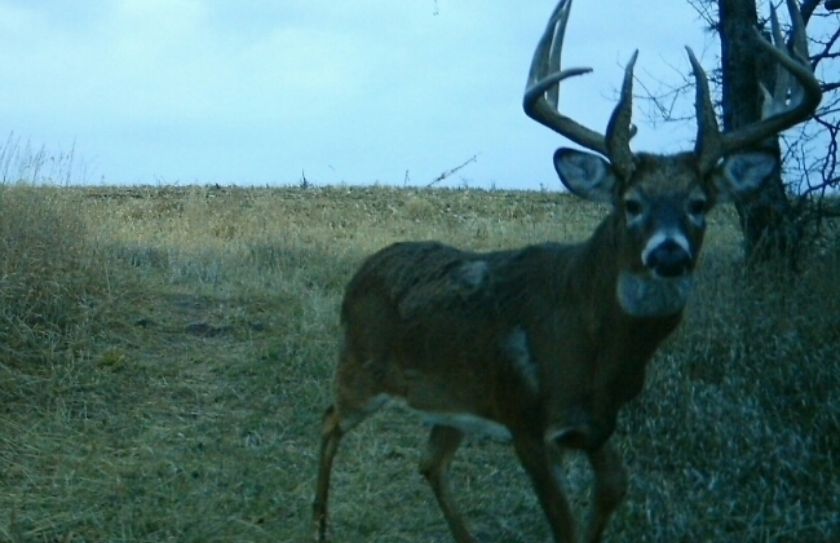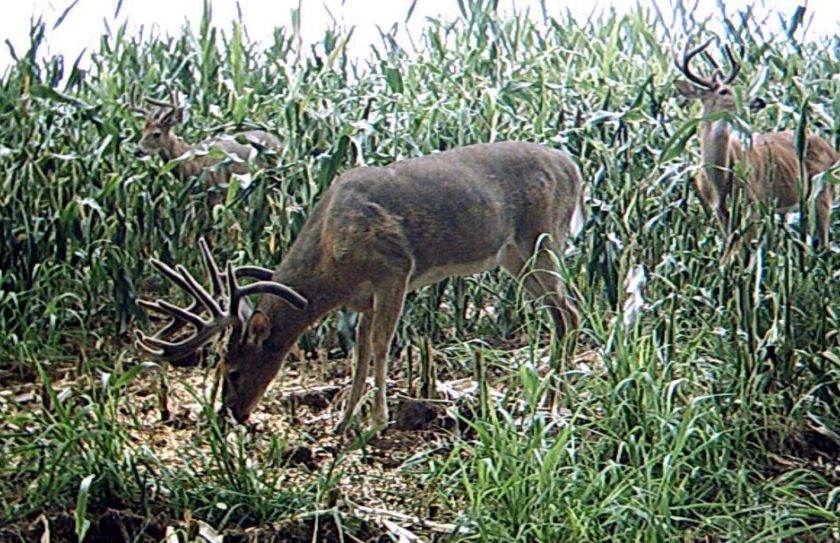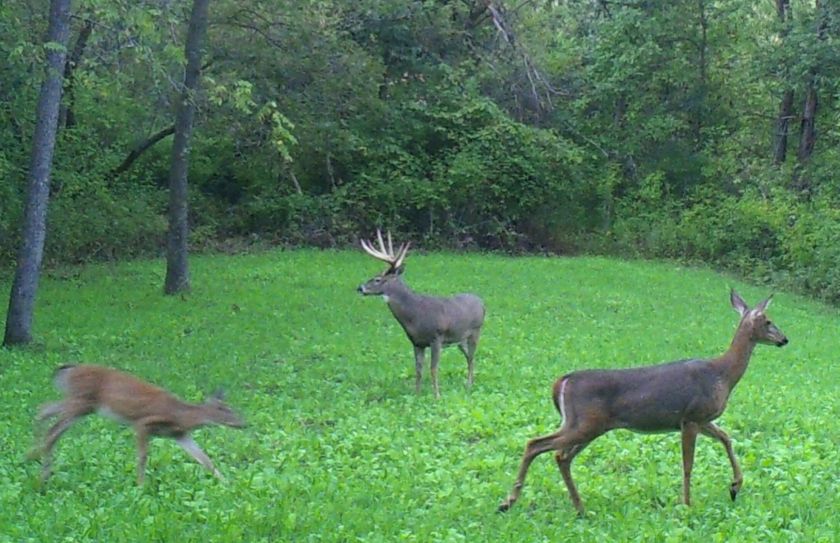
What are whitetail habitat lines of movement? They are a defined travel corridor between bedding to food, food to food, or bedding to bedding, basically between hotspots of deer activity. These habitat lines of movement, and the integrity of those lines, are critical to your parcel’s holding and hunting ability. When you hear of someone saying their doe herd is hard to hunt you can be quite confident they have destroyed the lines of movement on their property, which can be done with intrusions at the hotspot locations, or on the defined lines of movements.
Recognizing and defining lines of whitetail movement is the best way to setup bow stand locations for mature buck encounters. Here is how we recently created a Precision Buck Hunting System with defined travel corridors and bedding areas.
Here are some thoughts on the habitat lines of movement:
1. The longer the distance between high quality hotspots, the easier it is for you to hunt. You are basically accessing the line perpendicular to the movement. When you are accessing the line of movement, and not the hotspots themselves, then it is easier for you to get in and out of stand positions without spooking game. The further apart the hotspots are, the more likely you can perserve the hotspots and continue the line of movement. Also, when the hotspots are further apart, the options for wind direction increase because 45 degree wind patterns then can blow past and upwind of the adjacent hotspots.
Here are more great ways to take advantage of Natural Whitetail Movements
2. Random lines of movement on your property are a major stumbling block to your success. An example of this would be taking an 80 acre parcel and making it all sanctuary by completing a massive timber harvest. Another example of this is the “schooled” biology or “wildlife” approach by attempting to improve every square inch of your parcel for deer or wildlife. The end result of random lines is a property that is almost impossible to hunt! Great if you never hunt the parcel…but most of us are hunters You are left with a parcel that fairly evenly distributes the deer herd across the entire landscape, making it impossible for you to walk in just about any direction without spooking game. This is less noticable on a 1000 acre tract or more because you more closely encompass the daily lives of the local herd, but on a small parcel setting traps for yourself to spook deer through random, undefined patterns of movement can ruin your property in the first couple days of hunting.
3. It’s nice for the lines of movement to be anchored on either end by large hotspots. Depending on your parcel’s locations, for example: Ag, Wilderness, Big Woods, etc. it maybe more important to anchor your lines with large food sources, bedding areas, or a combination of both.
4. Your lines of movement may or may not be encompassed by your parcel. In large ag settings it’s pretty easy because huge lines of movement can be defined to surrounding food sources, anchored by appropriately located bedding sources on your parcel. On the “flip-side”, wilderness parcels surrounded by remote heavy cover can’t be anchored by inner bedding cover because it’s a whole lot more of the same…doesn’t really establish the line in anyway! Instead, in a heavy wilderness setting you can actually have exterior bedding areas anchoring inner food sources on the parcel.
5. Inner lines of movement anchored by larger hotspots can be strengthened and further defined in a few ways:
a. small food sources or hunting plots
b. bedding pockets, which usually attract the female portion of the population due to the high-traffic location
c. creating brush/hinge cut/debris/timber cutting lines that sepperate outer “non-improved” areas you access through to stand locations, with improved areas upwind and behind the screening cover to offer a defined edge of movement.
d. “Lay of the land”-could be an inner topography change, open pond or waterway, or any other natural feature that constricts deer movement to one side.
6. Lines of movemeent will help you with poor access situations. For example, a west to east access is typically poor because you are entering the parcel traditionally “with the wind”. But, with an inner defined line of movement flanked by sufficient screening cover on the outside, you then have an effective north and south access for land use and hunting. The more you strengthen the inner line, the more effective you are at establishing that west/east movement pattern so you can take advantage of it.
7. Often a line of movement will “T” to another perpendicular movement including a large portion of your bedding cover towards the rear or back of your property. This could take place in any direction but it sets up for hunting the inside corners of the “T”, as well as the outside downwind sides of the top of the “T” itself.
8. Some parcels contain great bedding cover on both ends. By defining a narrow line of movement between the two you then create an easier situation to hunt with various wind directions, as well as outside of the bedding cover on either end depending on access.
9. It is critical that both hotspots within the line, and the line itself, are insulated/screened in some manner. Both bedding and food sources have to be screened effectively to be secure. You are providing very private and secure lines of daily movement for the local herd so each hotspot has to be protected from your movements. It does no good to have the “perfect” bedding or food source if a deer in either of those locations can stand on the edge and see YOU 50 yards away as you walk buy or access stand locations.
10. By hunting habitat lines of movement, and not the hotspots, you decrease your risk of deer/human encounter. A “line of movement” is just that! The deer are traveling in a line from hotspot to hotspot. Unlike a hotspot where a deer may visit a food source or bedding area for hours at a time, a deer spends a very brief amount of time traveling in a defined line of movement. Of course a deer will stop to browse or a buck may be successfully slowed down by providing licking branches within the travel corridor, but by hunting a line of movement you expose yourself only a fraction of the time to the local deer herd in comparision to adjacent hotspots.
Defining Lines of Movement
The key is DEFINING these lines of movement so that you take the guess work out of where the deer travel, and where you can effectively enter and exit the property. This will often include mature timber, or sepperation of habitat quality levels to allow for effective “non-deer” access. It may include low-quality field edge for access as well from the outside. Fencing can be used to strengthen line and stand locations, as well as low to med hinge cuts, topographical changes, heavy conifer, etc.
The ultimate “trick” is to put it all together in a cohesive unit that gives your property the optimum lines of movement encompassing as many appropriately located hotspots as possible. But, it’s not as easy looking at the “perfect” property layout on paper. Instead, there are no “perfect” property layouts and every parcel is different in many ways! Every exterior and interior influence needs to be considered. Neighboring bedding areas, neighboring food sources, neighboring funnels/travel corridors, waterways, houses, roads, age and type of timber, etc. everything needs to be taken into consideration to effectively establish and hunt the lines of movement that are necessary for the success of your parcel.
Conclusion
These lines of movement are one of the most important aspects of property management I assist my customers with. Often the success of the parcel doesn’t fall under the perfect bedding area or food source…instead “adequate” is certianly a good thing! But, your success will fall under how well you establish and maintain the integrity of the lines of movement on your parcel. There are many parcels out there that simply just need a hunter on them that understands the lines of movement, and hunts them correctly..whether or not they lift a finger to strengthen the lines, or improve the hotspots in anyway.
Just some thoughts on part of what goes into developing an effective property layout that should always include; whitetail habitat lines of movement.


